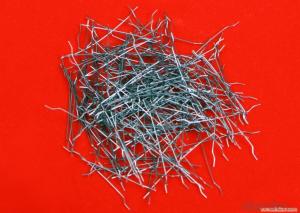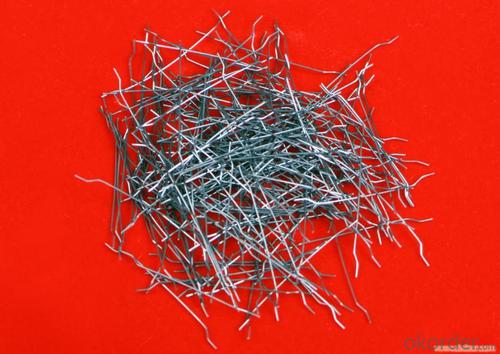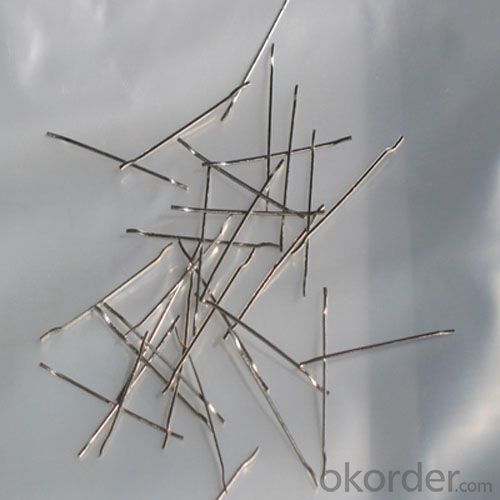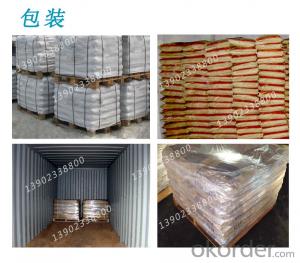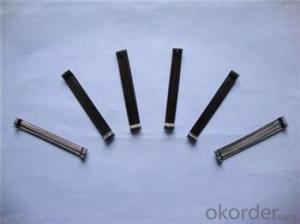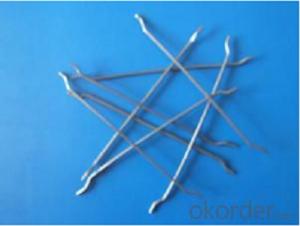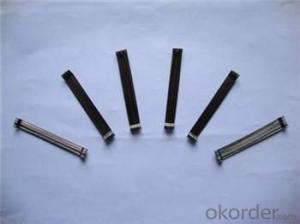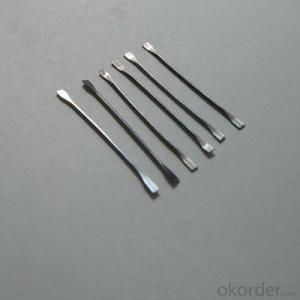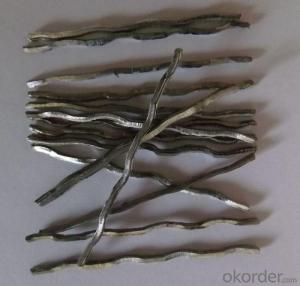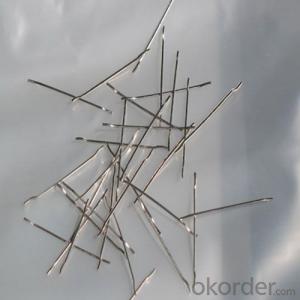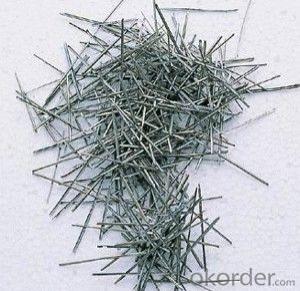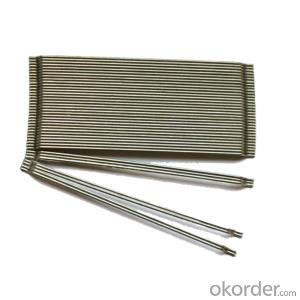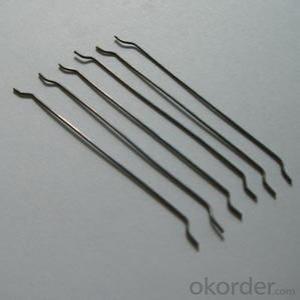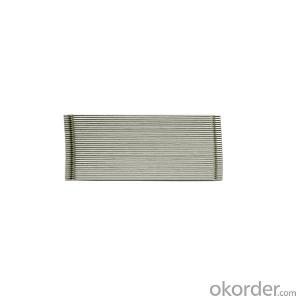Melt Extract Stainless Steel Fiber High Carbon Copper Coated Micro for Construction
- Loading Port:
- Tianjin
- Payment Terms:
- TT OR LC
- Min Order Qty:
- 5 kg
- Supply Capability:
- 30000 kg/month
OKorder Service Pledge
OKorder Financial Service
You Might Also Like
Quick Details
Place of Origin: China (Mainland)
Model Number: HT-ST
Material: Steel
Specifications
High carbon Copper coated Micro steel fiber for Construction
1)Provide uniform distrubution throughout concrete with excellent mixing
2)greatly improve concrete bonding and tensile strength
3)provide exceptional load stability and durability ,
4)improve mechanical performance o concrete
5)prevent the damage to the concrete
6)decrease the danger from crack of the concrete
7)decrease the breakage when earthquake or other terrible disater happena
2850MPA High carbon Copper coated Micro steel fiber for Building
Commodity | Diameter (mm) | Length (mm) | Aspect Ratios | Tensile Strength( MPa) |
Hook End Steel Fiber | 0.5-1.0 | 25-60 | 30-100 | 850- 1200 |
Waved Steel Fiber | 0.5-1.0 | 25-60 | 30-100 | 850-1200 |
Packing | bags or carton , 25Kgs net each, on pallets , or as your request | |||
Uses | industrial architecture , bridge, tunnel engineering and so on | |||
Remarks | special Steel Fibers are available according to the buyer’s requirements(tensile strength, diameter, length etc.). | |||
Picture
Steel fiber straight type
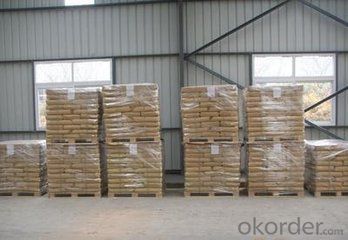
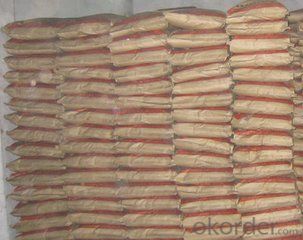

FAQ
certificated: ISO 9001
Technical advantages of Daye steel fiber:
A. Improve mechanical performance of concrete
B. Provide uniform distribution throughout concrete with excellent mixing
C. No balling or caking by adopt correct mixing method
D. Reduce concrete volume
E.Save construction time and cost
F.Reduce excavation volume
G.Available for jointless floor.
- Q: About how much is the steel fiber?
- In addition, the production process of the appearance of the requirements are very strict, wavy, straight hook, end hook type, dumbbell type, and so on
- Q: Can melt extract stainless steel fiber be used in tunnel shotcrete lining applications?
- Yes, melt extract stainless steel fiber can be used in tunnel shotcrete lining applications. This type of fiber is commonly used to enhance the mechanical properties of shotcrete, such as its tensile strength, flexural strength, and impact resistance. Additionally, melt extract stainless steel fibers can improve the durability and durability of shotcrete, making it suitable for tunnel applications where long-term performance is critical. These fibers are typically mixed into the shotcrete mixture and contribute to the overall structural integrity of the tunnel lining. Overall, melt extract stainless steel fibers are a reliable and effective solution for reinforcing tunnel shotcrete linings.
- Q: How does melt extract stainless steel fiber affect the permeability of concrete to water?
- Melt extract stainless steel fiber improves the permeability of concrete to water. The fibers create a network within the concrete, reducing the size and number of capillary pores. This results in a denser and more impermeable structure, reducing water ingress and increasing the durability of the concrete.
- Q: Can melt extract stainless steel fiber be used in the construction of precast concrete walls?
- Yes, melt extract stainless steel fiber can be used in the construction of precast concrete walls. These fibers can enhance the strength and durability of the concrete, reduce cracking, and improve the overall performance of the precast walls.
- Q: Can melt extract stainless steel fiber be used in high-temperature environments?
- Yes, melt extract stainless steel fiber can be used in high-temperature environments. This type of fiber is specifically designed to withstand extreme heat and maintain its structural integrity, making it suitable for applications where temperatures are elevated.
- Q: Can melt extract stainless steel fiber be used in tunnel linings for underground mining?
- Melt extract stainless steel fiber is indeed applicable for tunnel linings in underground mining. Renowned for their exceptional tensile strength, resistance to corrosion, and durability, stainless steel fibers prove to be fitting for demanding tasks like mining tunnels. By reinforcing the lining, these fibers effectively enhance its structural integrity, preventing any cracks or fractures. Furthermore, the stainless steel material's resistance to chemical reactions, moisture, and temperature fluctuations commonly found in underground mining settings solidifies it as a dependable choice for tunnel linings. With the ability to withstand diverse challenges and ensure long-term stability, stainless steel fibers are a reliable option.
- Q: Can melt extract stainless steel fiber be used in tunneling and underground construction?
- Yes, melt extract stainless steel fiber can be used in tunneling and underground construction. This type of fiber is commonly used to reinforce concrete and enhance its mechanical properties, making it suitable for various applications in tunneling and underground construction projects. It helps to improve the structural integrity of concrete, increase its resistance to cracking and improve overall durability, making it an ideal choice for these types of projects.
- Q: How does melt extract stainless steel fiber contribute to the crack width control of concrete?
- Melt extract stainless steel fiber plays a significant role in controlling the crack width of concrete. This type of fiber is made by melting stainless steel and then rapidly extracting it, resulting in a high-strength and ductile material. When added to concrete mixes, these fibers enhance the tensile strength and ductility of the material, which helps to control crack width. During the curing process, concrete undergoes shrinkage due to the evaporation of water. This shrinkage can lead to the formation of cracks, which may compromise the structural integrity of the concrete. By incorporating melt extract stainless steel fibers into the concrete mix, these fibers act as reinforcement, effectively bridging the cracks that may form. The high tensile strength of stainless steel fibers allows them to resist the tensile forces that cause cracks to widen. When cracks do occur, the fibers distribute stress and prevent the crack from expanding, thus controlling the crack width. This prevents the cracks from becoming larger and potentially leading to structural failure. Moreover, the ductility of stainless steel fibers allows them to undergo deformation without fracturing. This means that the fibers can absorb energy and accommodate movement within the concrete, reducing the chances of cracks widening. The combination of high strength and ductility offered by melt extract stainless steel fibers makes them an effective solution for crack width control in concrete. In summary, melt extract stainless steel fibers contribute to the crack width control of concrete by reinforcing the material, distributing stress, and preventing cracks from widening. Their high tensile strength and ductility make them an excellent choice for enhancing the overall durability and longevity of concrete structures.
- Q: How is the dosage of melt extract stainless steel fiber determined for concrete reinforcement?
- The dosage of melt extract stainless steel fiber for concrete reinforcement is determined based on various factors including the specific project requirements, the type of concrete being used, and the desired properties of the reinforced concrete. The dosage of stainless steel fiber is typically determined by conducting extensive testing and analysis to ensure that the reinforced concrete meets the desired performance criteria. The dosage is usually expressed in terms of weight or volume percentage of stainless steel fiber relative to the total weight or volume of the concrete. The first step in determining the dosage is to evaluate the specific project requirements such as the design strength, durability, and crack resistance of the concrete. This information helps in identifying the necessary properties that the stainless steel fiber should provide to the concrete. Next, laboratory testing is conducted to assess the compatibility between the stainless steel fiber and the concrete mix. This includes evaluating the fiber's bonding characteristics, dispersibility, and its effect on the fresh and hardened properties of the concrete. The dosage is adjusted based on the results of these tests to optimize the performance of the reinforced concrete. Furthermore, the type of concrete being used also plays a role in determining the dosage. Different concrete mixes have different characteristics, such as different aggregate sizes, water-cement ratios, and admixtures. These factors can influence the dosage of stainless steel fiber required to achieve the desired properties. In addition, the desired properties of the reinforced concrete, such as flexural strength, impact resistance, and crack control, also influence the dosage. Higher dosages of stainless steel fiber are generally required for applications that demand superior performance in terms of these properties. It is important to note that the dosage of stainless steel fiber should be carefully determined to avoid any negative effects on the workability of the concrete mix. Excessive dosages can lead to difficulties in placing and finishing the concrete, as well as potential segregation or balling of the fiber. In summary, the dosage of melt extract stainless steel fiber for concrete reinforcement is determined through a comprehensive analysis of project requirements, concrete mix characteristics, and desired properties of the reinforced concrete. Extensive testing and evaluation are conducted to optimize the dosage and ensure that the stainless steel fiber effectively enhances the performance of the concrete.
- Q: What is the recommended spacing between melt extract stainless steel fibers in concrete?
- The recommended spacing between melt extract stainless steel fibers in concrete varies depending on several factors such as the intended use of the concrete, the type of structural element, and the desired performance characteristics. However, a commonly recommended spacing range is between 1 inch (25 mm) to 2 inches (50 mm) apart. This spacing allows for a sufficient distribution of fibers throughout the concrete matrix, enhancing its tensile strength, crack resistance, and durability. It is important to consult the specific product guidelines and engineering specifications provided by the manufacturer to ensure the proper spacing for the particular stainless steel fibers being used. Additionally, consulting with a structural engineer or concrete expert can provide further guidance specific to the project requirements.
Send your message to us
Melt Extract Stainless Steel Fiber High Carbon Copper Coated Micro for Construction
- Loading Port:
- Tianjin
- Payment Terms:
- TT OR LC
- Min Order Qty:
- 5 kg
- Supply Capability:
- 30000 kg/month
OKorder Service Pledge
OKorder Financial Service
Similar products
Hot products
Hot Searches
Related keywords
